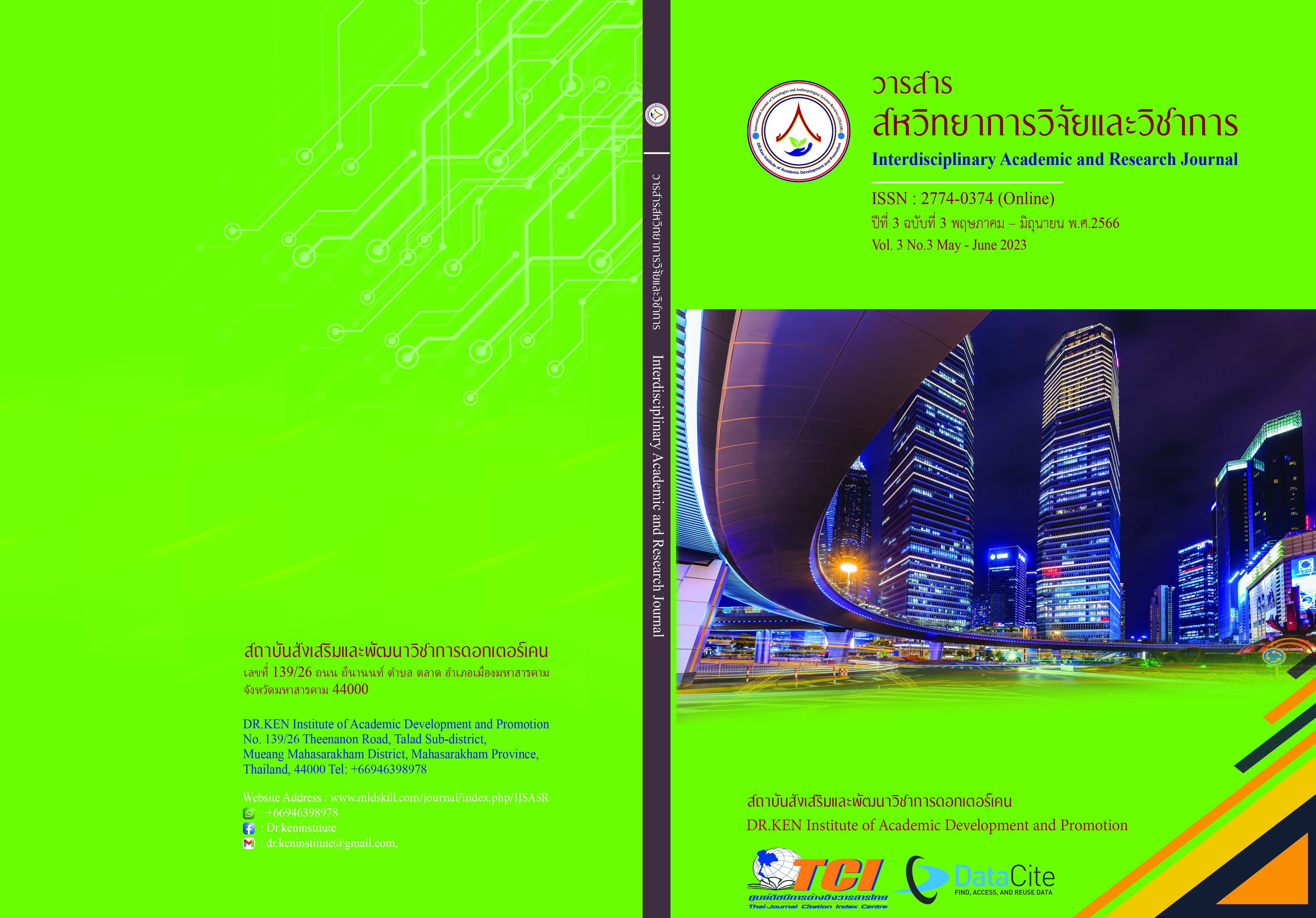Creative Leadership of School Administrators, Sa Kaeo Primary Educational Service Area Office 1
DOI:
https://doi.org/10.14456/iarj.2023.124Keywords:
Creative Leadership; , School AdministratorsAbstract
For modern leaders to build good interpersonal relationships, understand others, and have the ability to communicate effectively creatively, and change management. Modern leaders must build personal and professional networks to increase agility and flexibility in working both inside and outside the organization, adapting to an environment that is conducive to change. The objectives of this research were (1) to study the creative leadership of school administrators. And 2) to compare the creative leadership of school administrators classified by position, educational level, and size of the school. This study was conducted in schools under the Sa Kaeo Primary Educational Service Area Office 1. The sample group was 320 administrators and teachers under Sa Kaeo Primary Educational Service Area Office 1. The research tool was a questionnaire on the creative leadership of school administrators. The basic statistics used for data analysis were frequency, percentage, mean, standard deviation, t-test, and F-test. The results showed that (1) The opinions towards creative leadership of school administrators overall were at a high level. And (2) a Comparison of opinions towards creative leadership of school administrators found that; (a) Classified according to the overall position and the side is not different, (b) Classified according to the level of education in general and in each aspect is not different, and (c) classified by the size of educational institutes, the overall difference was statistically significant at the .05 level.
References
จุฑาทิพย์ ทัพไทย. (2560). ภาวะผู้นำเชิงสร้างสรรค์ของผู้บริหารสถานศึกษา โรงเรียนอนุบาลสามเสน (สลากกินแบ่งรัฐบาลอุปถัมภ์) สำนักงานเขตพื้นที่การศึกษาประถมศึกษากรุงเทพมหานคร. ปริญญานิพนธ์การศึกษามหาบัณฑิต สาขาวิชาการบริหารการศึกษา มหาวิทยาลัยบูรพา.
ธราธิป เลิศชิรพันธ์. (2563). พฤติกรรมภาวะผู้นำเชิงสร้างสรรค์ของผู้บริหารสถานศึกษาสังกัดศูนย์พัฒนาคุณภาพมาตรฐานการศึกษาลำตะคอง สำนักงานเขตพื้นที่การศึกษาประถมศึกษานครราชสีมาเขต 4. วิทยานิพนธ์ครุศาสตรมหาบัณฑิต สาขาการบริหารการศึกษา มหาวิทยาลัยราชภัฏวไลยอลงกรณ์.
นเรศ บุญช่วย. (2553). แผนกลยุทธ์เพื่อพัฒนาภาวะผู้นำเชิงสร้างสรรค์ที่เหมาะสมสำหรับผู้บริหารสถานศึกษา. วิทยานิพนธ์ปรัชญาดุษฎีบัณฑิต สาขาวิชาการบริหารการศึกษา มหาวิทยาลัยราชภัฏวไลยอลงกรณ์.
มณฑา ศิริวงษ์. (2559). ภาวะผู้นำเชิงสร้างสรรค์ของผู้บริหารสถานศึกษาตามความคิดเห็นครูอำเภอองครักษ์สำนักงานเขตพื้นที่การศึกษาประถมศึกษานครนายก. วิทยานิพนธ์ศึกษาศาสตรมหาบัณฑิต สาขาวิชาการบริหารการศึกษา มหาวิทยาลัยปทุมธานี.
มนัญชยา ควรรำพึง. (2564). ภาวะผู้นำเชิงสร้างสรรค์ของผู้บริหารในโรงเรียนขยายโอกาสทางการศึกษา สังกัดสำนักงานเขตพื้นที่การศึกษาประถมศึกษากระบี่. วิทยานิพนธ์ครุศาสตรมหาบัณฑิต สาขาวิชาการบริหารการศึกษา มหาวิทยาลัยราชภัฏนครศรีธรรมราช.
มัทนา วังถนอมศักดิ์. (2550). รูปแบบแรงจูงใจในการปฏิบัติงาน. วิทยานิพนธ์ปรัชญาดุษฎีบัณฑิต สาขาวิชาการบริหารการศึกษา มหาวิทยาลัยศิลปากร.
สำนักงานเขตพื้นที่การศึกษาประถมศึกษาสระแก้ว เขต 1. (2565). สารสนเทศทางการศึกษา 2564. สุพรรณบุรี : สำนักงานเขตพื้นที่การศึกษาประถมศึกษาสระแก้ว เขต 1
สำนักงานคณะกรรมการพัฒนาการเศรษฐกิจและสังคมแห่งชาติ. (2560). แผนพัฒนาเศรษฐกิจและสังคมแห่งชาติ ฉบับที่ 12 (พ.ศ.2560 - 2564). กรุงเทพมหานคร: ผู้แต่ง.
Best, J. W. (1981). Research in Education. 4th edition. New Jersey: Prentice Hall.
Krejcie, R. V., & Morgan, D. W. (1970). Determining sample size for research activities. Educational and Psychological Measurement, 30, 607-610.
Likert, R. (1976). Management styles and the human component. New York: AMACOM.
Downloads
Published
How to Cite
Issue
Section
License
Copyright (c) 2023 Phrompiriya Pinagapho

This work is licensed under a Creative Commons Attribution-NonCommercial-NoDerivatives 4.0 International License.
Copyright on any article in the Interdisciplinary Academic and Research Journal is retained by the author(s) under the under the Creative Commons Attribution-NonCommercial-NoDerivatives 4.0 International License. Permission to use text, content, images, etc. of publication. Any user to read, download, copy, distribute, print, search, or link to the full texts of articles, crawl them for indexing, pass them as data to software, or use them for any other lawful purpose. But do not use it for commercial use or with the intent to benefit any business.
















.png)


